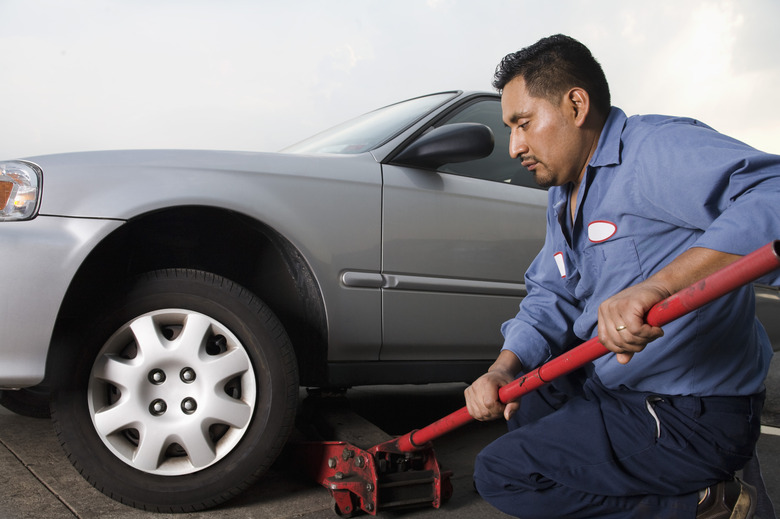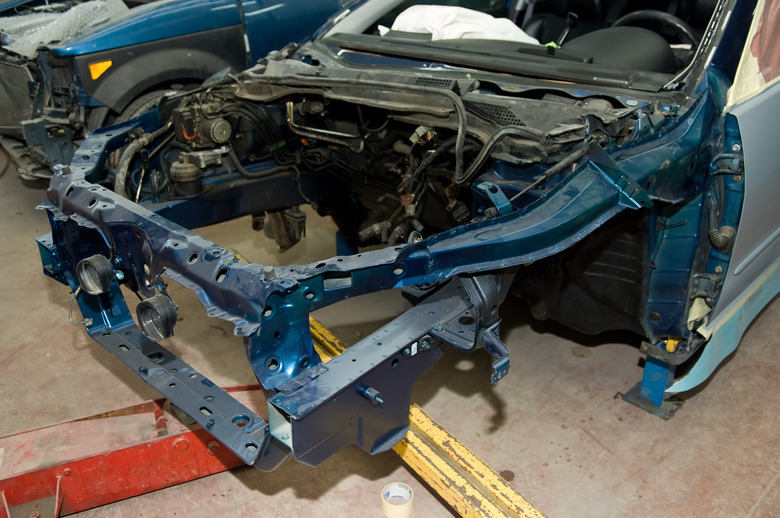How A Hydraulic Jack Works
The Fundamentals of a Jack
The Fundamentals of a Jack
A jack is a device meant to multiply a small force in order to enact a large force on an object. In principle, it works similarly to a mechanical advantage, such as a pulley. Jacks must have a source of external power that allows the jack to exert force. In the case of a hydraulic jack, the power source comes from a pump. The pump is usually mechanically powered, so a hydraulic jack is very powerful relative to other jacks.
The Components of a Hydraulic Jack
The Components of a Hydraulic Jack
A hydraulic jack is an incredibly simple device, considering its usefulness. It comprises a cylinder, which can hold hydraulic fluid, and a pumping system to move the fluid. Generally, oil is used as a hydraulic fluid, because it relieves the necessity of lubricating the components of the jack. The pumping system generally comprises some sort of pump, either hand-powered or, more likely, mechanically powered, that serves to apply pressure to the fluid. The pumping system pushes hydraulic fluid through a one-way valve that allows the fluid to pass into the jack cylinder, but does not allow the fluid to pass back. Obviously, the jack has some sort of footing and a plate that is moved by the cylinder when the jack is activated.
How the Jack Exerts Force
How the Jack Exerts Force
A hydraulic jack's functioning is described very accurately by Pascal's principle, which states that a force applied to an enclosed fluid is transferred equally throughout the entire fluid. This means that the fluid must not be able to be compressed. When the jack's pump is activated, it applies pressure on the hydraulic fluid, which fills the cylinder. Because the cylinder is completely filled while the pump is active, and the one-way valve completely encloses the fluid, pressure builds within the cylinder. The pressure escapes via the easiest way possible: it pushes up on the plate of the jack, hence putting out force. The pump basically exerts a small force on the fluid continuously until the fluid has enough pressure to push up the jack, which lifts whatever is being lifted at the time. This means that the hydraulic jack can exert massive forces with simply a pump. However, all hydraulic jacks must be engineered so that the pressure inside the cylinder, which gets very high, is not released by a structural failure of the cylinder or the valve connecting the cylinder to the pump while the jack is in operation. To release the pressure of the jack, the one-way valve is simply released so that the hydraulic fluid flows back out of the jack's cylinder.
References
Cite This Article
MLA
Scott, David. "How A Hydraulic Jack Works" sciencing.com, https://www.sciencing.com/hydraulic-jack-works-5386828/. 24 April 2017.
APA
Scott, David. (2017, April 24). How A Hydraulic Jack Works. sciencing.com. Retrieved from https://www.sciencing.com/hydraulic-jack-works-5386828/
Chicago
Scott, David. How A Hydraulic Jack Works last modified March 24, 2022. https://www.sciencing.com/hydraulic-jack-works-5386828/



